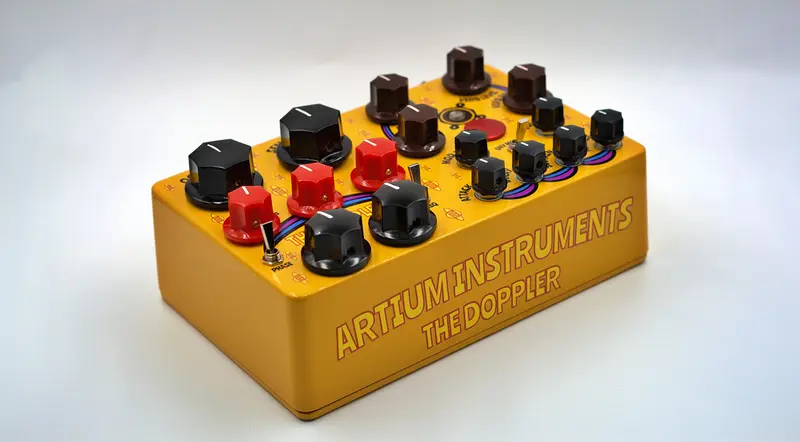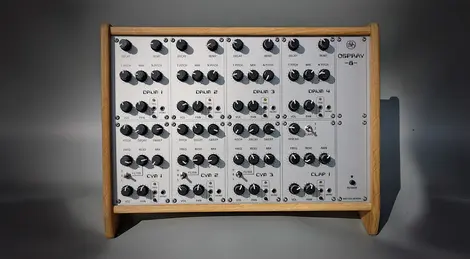Artium Instruments The Doppler
Artium Instruments has released The Doppler, a desktop synthesizer that brings FM synthesis into a compact, hands-on format. With its bright yellow enclosure and knob-per-function design, this instrument aims to make frequency modulation accessible while offering depth for experienced users.

At its core, The Doppler features an 8-note polyphonic, 2-operator FM engine. The synthesis architecture uses two sine waves, with the modulator being quantized and capable of modulating both the carrier's phase and frequency simultaneously. The carrier wave can also be sent through a feedback loop to modulate itself, and there's a 9-octave pink noise source available for additional modulation options.
Sound Design Features
The modulator sine wave is controlled through two rotary switches that handle frequency via quantized octave and semitone shifts. This provides a 5-octave range (two octaves above and below the carrier frequency) and a 12-semitone range for precise tuning. While the primary oscillator responds to MIDI, the modulating oscillator uses stepped potentiometers for octave and semitone tuning.
An ADSR envelope affects the carrier wave by default, but with the Env Mod toggle enabled, it also influences the amount of frequency modulation. The Mod Trail knob adds an interesting twist by lengthening the attack value, but only on the modulator wave, creating evolving textures.
The built-in low-pass filter helps shape the overall tone, while two onboard effects—a tap-tempo delay and stereo reverb—add space and dimension to the sound. The reverb is designed to provide anything from subtle room ambiance to expansive cathedral-like soundscapes.
Design and Connectivity
The Doppler emphasizes immediate control with every parameter mapped to a physical knob, button, switch, or jack. There are no menus to navigate, which keeps the workflow focused on sound creation. The interface includes two pushbutton switches on the back panel for octave shifting.
MIDI control comes via a USB-C port, with support for most class-compliant MIDI controllers requiring no setup. The synth includes two USB-C ports—one for power and another as a USB host for direct MIDI controller connection. Stereo outputs complete the connectivity options.
One notable feature is the ability to process external audio. The Doppler can function as a stereo delay and reverb effects processor, with dedicated stereo inputs on the back panel. This dual functionality makes it useful beyond synthesis duties.
Availability
The Doppler is now available following a successful Kickstarter campaign. As an open-source design, it offers transparency and potential for community development.
Whether you're exploring FM synthesis for the first time or looking for a compact FM instrument with effects processing capabilities, The Doppler provides a focused approach to sound design in a desktop-friendly format.







